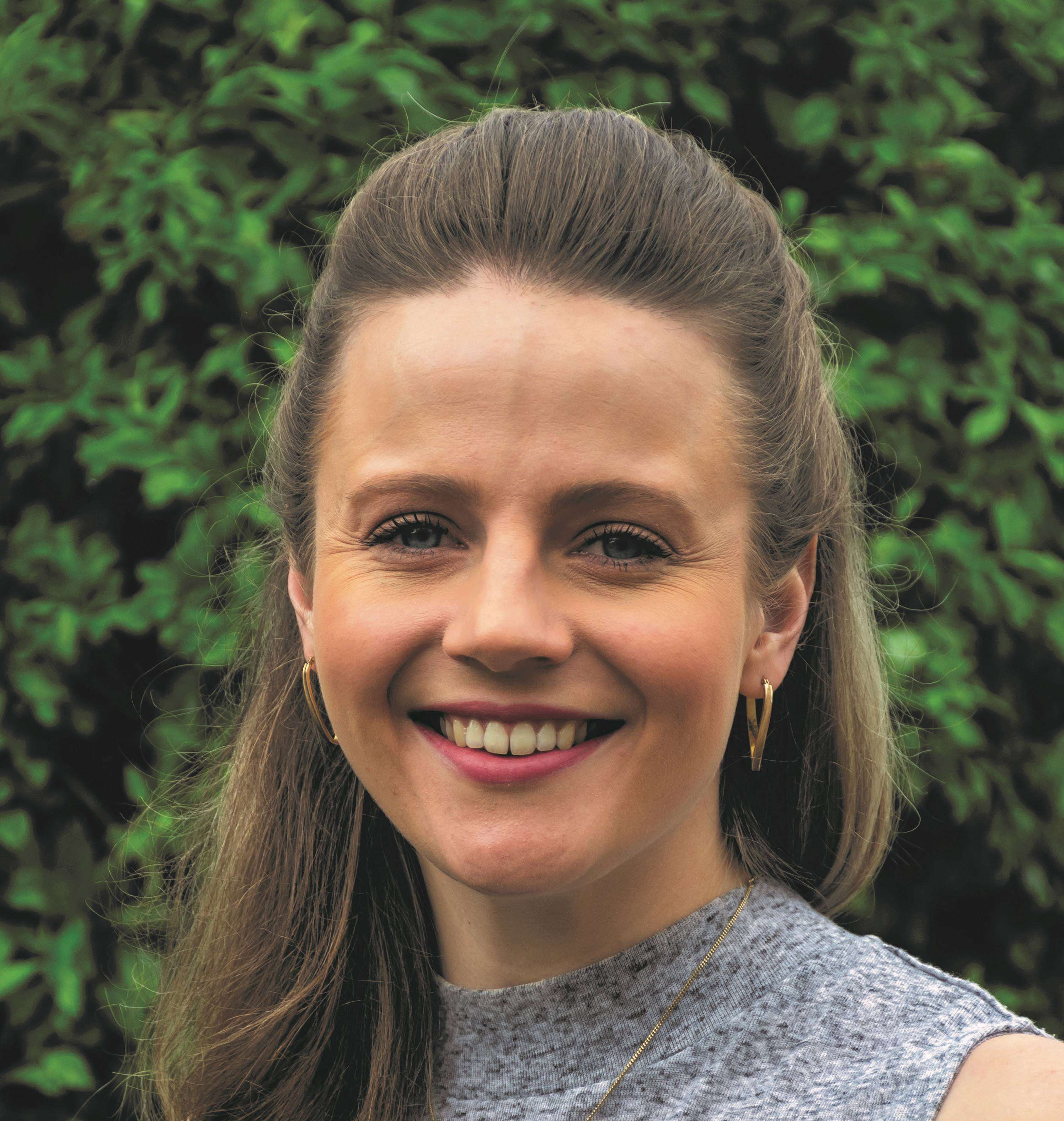
Although music is recognised as a creative art form, not all musicians would consider themselves creative. Particularly within the western classical tradition, music teaching and learning has primarily comprised the training of musical performers. Musicians who have learnt within this tradition have in turn developed strong identities as performers of music, but many not have developed identities as creators of music.
Creative identity in music refers to a person’s identity as a composer, an improviser, an arranger, or a performer of music (here meaning original interpretation). Forming this identity is important as it can motivate one to be creative. A creative identity is not given at birth; but is formed over time through someone’s unique background, their experiences, and the opportunities they’ve had to be creative.
In my experience, alongside opportunities to be creative, acquiring a holistic understanding of what musical creativity is has been invaluable in developing my own creative identity. This includes figuring out what it actually means to be creative in music, and also becoming familiar with the creative process.

THE CREATIVE PRODUCT
Creativity is commonly recognised as the process of combining existing thoughts and concepts in new ways, to produce original (novel, unique) and fitting (appropriate, valuable) outcomes. Musical creativity is therefore proposed as the process of combining existing musical knowledge in new ways, to produce original and fitting musical outcomes. These outcomes typically take the form of improvisations, compositions, arrangements, and performances.
Originality
A musical outcome is deemed original when it has not existed previously in exactly the same form. It may reflect freshness and surprise and stand out due to sounding uncommon amongst other musical outcomes.
Fittingness
The criterion of fittingness sets apart creative musical outcomes from musical responses. Musical responses are generally random, and not considered to hold value as a creative product – such as someone banging aimlessly on the piano. Fittingness also indicates that not all instances of improvising, composing, arranging, and performing are necessarily creative. These musical actions can be done inadequately – such as improvising using a scale that doesn’t fit with the key of the piece, or composing a piano work that is physically impossible to play.
The criterion of both originality and fittingness for musical creativity is, therefore, not designed to make musical creativity exclusive or elite, but rather to highlight that musical creativity is an informed, thoughtful and intentional process.

Creative categories
We now build on these criteria by acknowledging that there are also different categories (or levels) of creative outcomes. Typically, outcomes are categorised as “big C” or “little c”. “Little c” are small creative outcomes, such as a short improvised phrase, or an embellishment to a melody. “Big C” includes creative outcomes like large compositions or arrangements that are new to society and contribute to the broader musical conversation. Recognising both levels of creative outcomes contributes to a holistic understanding of musical creativity and its different contexts.

THE MUSICALLY CREATIVE PROCESS
Musical Knowledge
Generating original and fitting musical outcomes is the result of the creative process. During the creative process, an individual draws from their “bank” of musical knowledge. This bank includes things like the general musical language – rules of melody, harmony and rhythm.
For example, once a pianist understands that effective melodies have a rise-and-fall contour (rules of melody), they have the musical knowledge to improvise or compose stronger melodies. Once a pianist learns the C major chord (rules of harmony), they can improvise or compose an effective melody using the chord’s notes, over a C major accompaniment.
Even a basic “bank” of knowledge immediately equips individuals for the creative musical process.
Musical knowledge also includes musical genres and within these, musical styles. Musical genres and styles are considered branches of musical knowledge because they encompass many types of knowledge, including melodic and harmonic languages; common (and sometimes genre- or style-specific) forms; musical terminology, phrases and idioms. These provide parameters for creativity, allowing individuals to fittingly create within genres. For example: unique musical forms within classical music include sonata form and cadenza; the harmonic movement here, specifically in reference to cadence points, is primarily built around chords I, IV and V7. On the other hand, jazz genres predominately use the ii7 – V7 – IM7 cadence.
Exposing oneself to a variety of musical genres builds one’s melodic, harmonic and rhythmic vocabulary, and this musical knowledge is all drawn upon during the creative process.
“Learn the rules like a pro, so you can break them like an artist.” (Attributed to Pablo Picasso)
Once a musician is familiar with the general musical language, they can then experiment and break the rules. For example, once familiar with a G major 7 chord, a pianist may experiment by lowering the third note of the chord by a semitone. The individual has now made a G minor major 7th chord, and immediately acquires new musical knowledge that they can add to their “bank”. Christopher Norton demonstrates this with his Jazz Piano Sonata, blending the classical sonata form with the melodic and harmonic language of jazz.
Enabling Craft Skills
Alongside musical knowledge, musical creativity is facilitated by a set of enabling craft skills. For piano playing, there are two primary enabling craft skills – aural skills, and technique.
Aurally perceiving music is the process of hearing sound (including melody, harmony and rhythm), imagining sound, and comprehending sound. For instance, hearing a melody in your head, or imagining what Twinkle, Twinkle, Little Star would sound like in a minor key. Aural perception of music is supported by knowledge of the musical language. For example, if an individual hears two consecutive and stacked intervals, such as a minor third followed by a major third, their musical knowledge will allow them to identify those sounds as a minor chord.

The second primary enabling craft skill is technique, which facilitates the performance of musical creations. Technique for a pianist encompasses things like tone (the ability to shade music with dynamics and articulation), touch (including finger control), and pedalling technique.
Music literacy is also a useful enabling craft skill. Although not crucial to enabling musical creativity, learning to read and write music in traditional or graphic form (such as with chord symbols) can allow individuals to notate their ideas or works. This could be for the purpose of personal record, or to disseminate their creative product to wider audiences.
Creative Thinking Skills
Creative thinking involves thinking that is convergent and divergent, imaginative and flexible. During the musical creative process, the individual subconsciously or consciously thinks creatively with sound, i.e. with melody, harmony, rhythm, timbre, and dynamics. Creative thinking is stimulated through strategies, such as brainstorming multiple endings to a musical phrase, or imagining an appropriate accompaniment to a short film. Creative thinking activities are important because through these, musicians may discover new avenues of sound. This reinforces that music is not fixed but is alive and can be ever evolving.

GREEN’S CONCEPTUAL FRAMEWORK FOR MUSICAL CREATIVITY
My aim here was to outline the primary pre-requisites for what constitutes musical creativity. Musical creativity lies between the intersection of the three pre-requisites for musical creativity.
Musical creativity requires musical knowledge such as, but not limited to, the general musical language; enabling craft skills; and creative thinking skills. As has been discussed, musical creativity that produces original and fitting musical outcomes is a complex and informed process – but it is achievable for all music-makers.
This conceptual framework is intended to be used as a tool by studio piano teachers, for developing their holistic understanding of what musical creativity is. This level of understanding, of becoming well acquainted with the nature of musical creativity, equips teachers to foster their own and their students’ creativity, and their creative identity.


Bibliography and Further Reading
Elliot, D. J. (1995). Music matters: A new philosophy of music education. New York, NY: Oxford University Press.
Glăveanu, V. P., & Tanggaard, L. (2014). Creativity, identity, and representation: Towards a socio-cultural theory of creative identity. New Ideas in Psychology, 34, 12–21. doi: 10.1016/j.newideapsych.2014.02.002
Hagstrom, F. (2005). Creating creative identity. Inquiry: Critical Thinking Across the Disciplines, 24(4), 19–28.
Hickey, M., & Webster, P. (2001). Creative thinking in music. Music Educators Journal, 88(1), 19123. doi: 10.2307/3399772
Jaussi, K. S., Randel, A. E., & Dionne, S. D. (2007). I am, I think I can, and I do: The role of personal identity, self-efficacy, and cross-application of experiences in creativity at work. Creativity Research Journal, 19(2–3), 247–258. doi:10.1080/10400410701397339
Karwowski, M. (2016). The dynamics of creative self-concept: Changes and reciprocal relations between creative self-efficacy and creative personal identity. Creativity Research Journal, 28(1), 99–104. doi:10.1080/10400419.2016.1125254
Odena, O., & Welch, G. (2009). A generative model of teachers’ thinking on musical creativity. Psychology of Music, 37(4), 416–442. doi: 10.1177/0305735608100374
Randles, C. A. (2010). Creative identity in music teaching and learning. (Doctoral dissertation: Michigan State University).
Randles, C., & Smith, G. D. (2012). A first comparison of pre-service music teachers’ identities as creative musicians in the United States and England. Research Studies in Music Education, 34(2), 173–187. doi:10.1177/1321103×12464836
Runco, M. A. (2004). Creativity. Annual Review of Psychology, 55, 657–687. doi:10.1146/annurev.psych.55.090902.141502
Runco, M. A., & Jaeger, G. J. (2012). The standard definition of creativity. Creativity Research Journal, 24(1), 92–96. doi:10.1080/10400419.2012.650092
Sawyer, R. K. (2012). Explaining creativity: The science of human innovation. New York, NY: Oxford University Press.
Stein, M. I. (1953). Creativity and culture. The Journal of Psychology, 36(2), 311–322. doi:10.1080/00223980.1953.9712897
Webster, P. R. (1990). Creativity as creative thinking. Music Educators Journal, 76(9), 22–28. doi:10.2307/3401073
Westerlund, H. (2008). Justifying music education: A view from here-and-now value experience. Philosophy of Music Education Review, 16(1), 79–95. doi: 10.2979/PME.2008.16.1.79

BONNIE GREEN is currently completing her Doctor of Philosophy at the University of Southern Queensland in Toowoomba. Her research focuses on the topic musical creativity and the concept of creative identity. Outside of her studies, Bonnie regularly composes and arranges music professionally and recreationally and has worked as a piano teacher, accompanist and musical director.